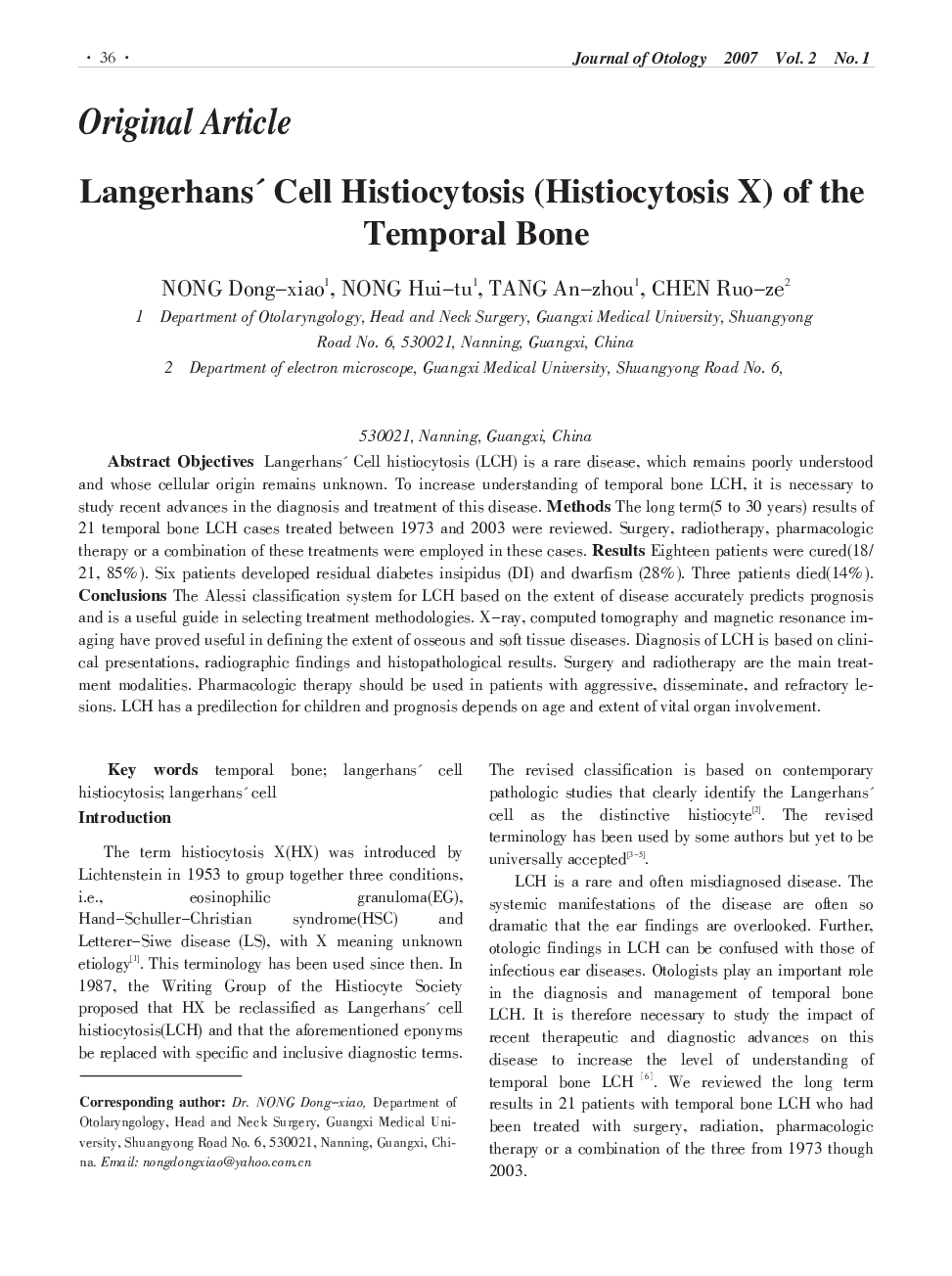| Article ID | Journal | Published Year | Pages | File Type |
|---|---|---|---|---|
| 4116898 | Journal of Otology | 2007 | 6 Pages |
ObjectivesLangerhans' Cell histiocytosis (LCH) is a rare disease, which remains poorly understood and whose cellular origin remains unknown. To increase understanding of temporal bone LCH, it is necessary to study recent advances in the diagnosis and treatment of this disease.MethodsThe long term(5 to 30 years) results of 21 temporal bone LCH cases treated between 1973 and 2003 were reviewed. Surgery, radiotherapy, pharmacologic therapy or a combination of these treatments were employed in these cases. Results Eighteen patients were cured(18/ 21, 85%). Six patients developed residual diabetes insipidus (DI) and dwarfism (28%). Three patients died(14%).ConclusionsThe Alessi classification system for LCH based on the extent of disease accurately predicts prognosis and is a useful guide in selecting treatment methodologies. X-ray, computed tomography and magnetic resonance imaging have proved useful in defining the extent of osseous and soft tissue diseases. Diagnosis of LCH is based on clinical presentations, radiographic findings and histopathological results. Surgery and radiotherapy are the main treatment modalities. Pharmacologic therapy should be used in patients with aggressive, disseminate, and refractory lesions. LCH has a predilection for children and prognosis depends on age and extent of vital organ involvement.
